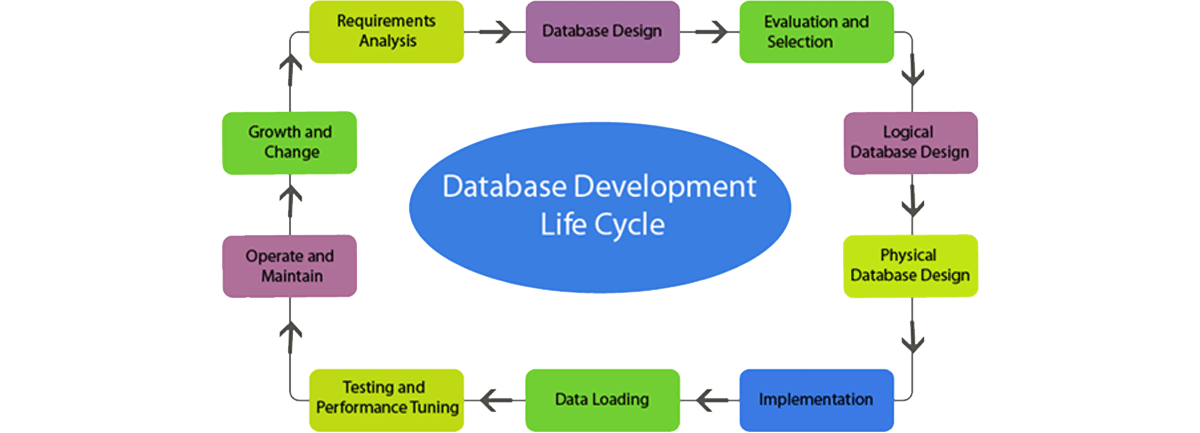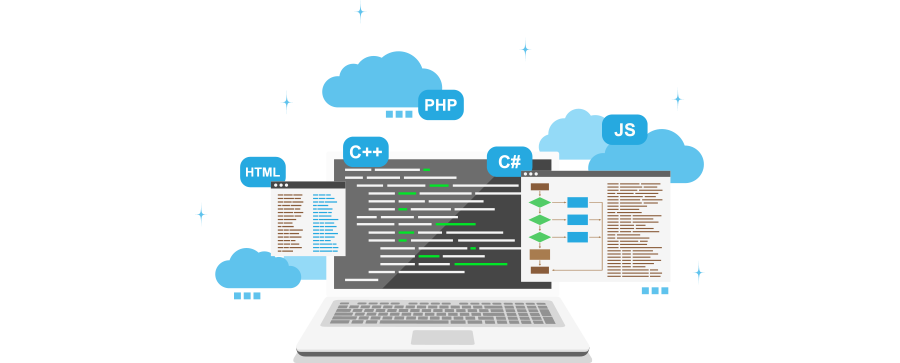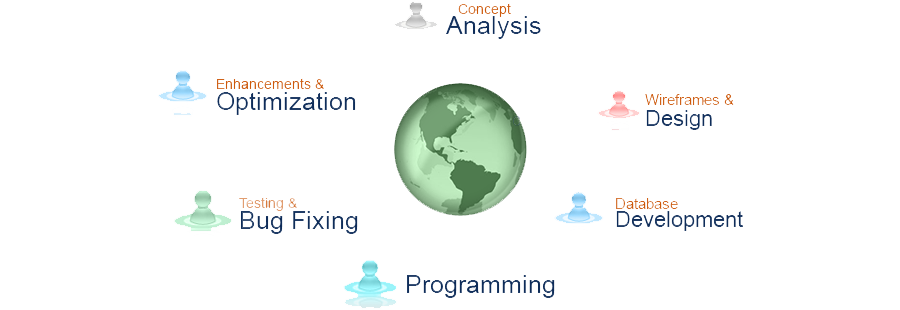Custom Software Development

At iSoft we know that one size rarely fits all, and it’s unlikely that a software solution will be exactly right for your business straight out of the box. But you shouldn’t have to change your processes and add to your workload to fit your software – we can help customise those existing software packages to make them work for you.
Adapting and updating your old legacy software systems can also be a huge challenge. The good news is we’ve ‘been there and done that’ many times, and we know the right questions to ask to ensure your transition to a new system will be as smooth and easy as possible.
iSoft itself is a growing business, and we understand that you need your software to be flexible, reliable, and scalable, so you won’t find yourself back at square one with an out-dated solution in 12 months’ time.
Typical Custom Software Development projects:
- Windows Applications
- Mobile Applications
- Web Applications
- Microsoft Office Solutions
- Database Management Systems
- Legacy System upgrades and Migration
Database Development

It goes without saying that nothing is more important to your business than your customers. So when it comes to software, nothing is more important than your database – and we’re here to help you use it as effectively as possible.
Many of our clients need standard databases to be customised to meet their broader business needs, such as integration with a website, industry specific software, sales CRM or email system.
Other clients have legacy databases and need our help to upgrade and update them, or to migrate their data too a whole new system.
Whatever your needs, you can be assured that iSoft has the experience and expertise you need to manage your most precious resource.
Typical Database Development projects:
- Database Modelling and Design
- Database Development
- Database Administration
- Data Migration
- Optimisation and Configuration
Software Integration
Your software should make your life easier, not harder, but often using lots of different applications causes headaches. iSoft can help you integrate all your systems, reducing the need for manual processing and cutting down on errors. We’ll help you save time and money by streamlining your business operations, allowing you and your team to focus on your most important tasks.
We do everything we can to improve the efficiency of your business systems and software, taking the time to understand the whole picture – even offering solutions and suggestions beyond the initial brief. No matter how big or small, simple or complex, we’ll make sure all your software fits together the way you need it to.
Typical Software Integration projects:
- Accounting and ERP
- Custom Applications
- E-Commerce
- Customer Relationship Management (CRM)
Business Intelligence

We all have access to more business and customer data than ever before, but analysing that data and presenting it in a user-friendly format can be a challenge. iSoft can help you get the most out of your data, creating customised reports, graphs and dashboards to ensure you have the most up-to-date information at your fingertips.
We can also offer detailed analysis to help you dig deeper, identifying trends and new insights to inform major business decisions and long-term strategy.
Typical Business Intelligence projects:
- Analyse business trends and drill down for insight
- Analyse customer, sales and item data
- Budget and forecast
- Visualise data
- Perform reporting functions
- Create flexible, customised scorecards
Software Development Process

A software development process or life cycle is a structure imposed on the development of a software product. There are several models for such processes, each describing approaches to a variety of tasks or activities that take place during the process.
Processes
More and more software development organizations implement process methodologies.
The Capability Maturity Model (CMM) is one of the leading models. Independent assessments can be used to grade organizations on how well they create software according to how they define and execute their processes.
There are dozens of others, with other popular ones being ISO 9000, ISO 15504, and Six Sigma.
Process Activities/Steps
Software Engineering processes are composed of many activities, notably the following:
Requirements Analysis: Extracting the requirements of a desired software product is the first task in creating it. While customers probably believe they know what the software is to do, it may require skill and experience in software engineering to recognize incomplete, ambiguous or contradictory requirements.
Specification: Specification is the task of precisely describing the software to be written, in a mathematically rigorous way. In practice, most successful specifications are written to understand and fine-tune applications that were already well-developed, although safety-critical software systems are often carefully specified prior to application development. Specifications are most important for external interfaces that must remain stable.
Software architecture: The architecture of a software system refers to an abstract representation of that system. Architecture is concerned with making sure the software system will meet the requirements of the product, as well as ensuring that future requirements can be addressed.
Implementation: Reducing a design to code may be the most obvious part of the software engineering job, but it is not necessarily the largest portion.
Testing: Testing of parts of software, especially where code by two different engineers must work together, falls to the software engineer.
Documentation: An important task is documenting the internal design of software for the purpose of future maintenance and enhancement.
Training and Support: A large percentage of software projects fail because the developers fail to realize that it doesn't matter how much time and planning a development team puts into creating software if nobody in an organization ends up using it. People are occasionally resistant to change and avoid venturing into an unfamiliar area, so as a part of the deployment phase, its very important to have training classes for the most enthusiastic software users (build excitement and confidence), shifting the training towards the neutral users intermixed with the avid supporters, and finally incorporate the rest of the organization into adopting the new software. Users will have lots of questions and software problems which leads to the next phase of software.
Maintenance: Maintaining and enhancing software to cope with newly discovered problems or new requirements can take far more time than the initial development of the software. Not only may it be necessary to add code that does not fit the original design but just determining how software works at some point after it is completed may require significant effort by a software engineer. About 60% of all software engineering work is maintenance, but this statistic can be misleading. A small part of that is fixing bugs. Most maintenance is extending systems to do new things, which in many ways can be considered new work.
Process Models
A decades-long goal has been to find repeatable, predictable processes or methodologies that improve productivity and quality. Some try to systematize or formalize the seemingly unruly task of writing software. Others apply project management techniques to writing software. Without project management, software projects can easily be delivered late or over budget. With large numbers of software projects not meeting their expectations in terms of functionality, cost, or delivery schedule, effective project management is proving difficult.
Waterfall processes
The best-known and oldest process is the waterfall model, where developers follow these steps in order. They state requirements, analyze them, design a solution approach, architect a software framework for that solution, develop code, test, deploy, and maintain. After each step is finished, the process proceeds to the next step.
Iterative processes
Iterative development prescribes the construction of initially small but ever larger portions of a software project to help all those involved to uncover important issues early before problems or faulty assumptions can lead to disaster. Iterative processes are preferred by commercial developers because it allows a potential of reaching the design goals of a customer who does not know how to define what he wants.
Agile software development processes are built on the foundation of iterative development. To that foundation they add a lighter, more people-centric viewpoint than traditional approaches. Agile processes use feedback, rather than planning, as their primary control mechanism. The feedback is driven by regular tests and releases of the evolving software.
Agile processes seem to be more efficient than older methodologies, using less programmer time to produce more functional, higher quality software, but have the drawback from a business perspective that they do not provide long-term planning capability. In essence, they say that they will provide the most bang for the buck, but won't say exactly when that bang will be.
Extreme Programming, XP, is the best-known agile process. In XP, the phases are carried out in extremely small (or "continuous") steps compared to the older, "batch" processes. The (intentionally incomplete) first pass through the steps might take a day or a week, rather than the months or years of each complete step in the Waterfall model. First, one writes automated tests, to provide concrete goals for development. Next is coding (by a pair of programmers), which is complete when all the tests pass, and the programmers can't think of any more tests that are needed. Design and architecture emerge out of refactoring, and come after coding. Design is done by the same people who do the coding. The incomplete but functional system is deployed or demonstrated for the users (at least one of which is on the development team). At this point, the practitioners start again on writing tests for the next most important part of the system.
While Iterative development approaches have their advantages, software architects are still faced with the challenge of creating a reliable foundation upon which to develop. Such a foundation often requires a fair amount of upfront analysis and prototyping to build a development model. The development model often relies upon specific design patterns and entity relationship diagrams (ERD). Without this upfront foundation, Iterative development can create long term challenges that are significant in terms of cost and quality.
Critics of iterative development approaches point out that these processes place what may be an unreasonable expectation upon the recipient of the software: that they must possess the skills and experience of a seasoned software developer. The approach can also be very expensive, akin to... "If you don't know what kind of house you want, let me build you one and see if you like it. If you don't, we'll tear it all down and start over." A large pile of building-materials, which are now scrap, can be the final result of such a lack of up-front discipline. The problem with this criticism is that the whole point of iterative programming is that you don't have to build the whole house before you get feedback from the recipient. Indeed, in a sense conventional programming places more of this burden on the recipient, as the requirements and planning phases take place entirely before the development begins, and testing only occurs after development is officially over.
The are many other methods to those listed above, and you can find out more by visiting the websites below.
Support for Software Development Processes
Select has been a major player in the development of iterative and incremental development processes over the last 20 years. Our tools therefore provide relevant facilities for those looking to use such processes.



